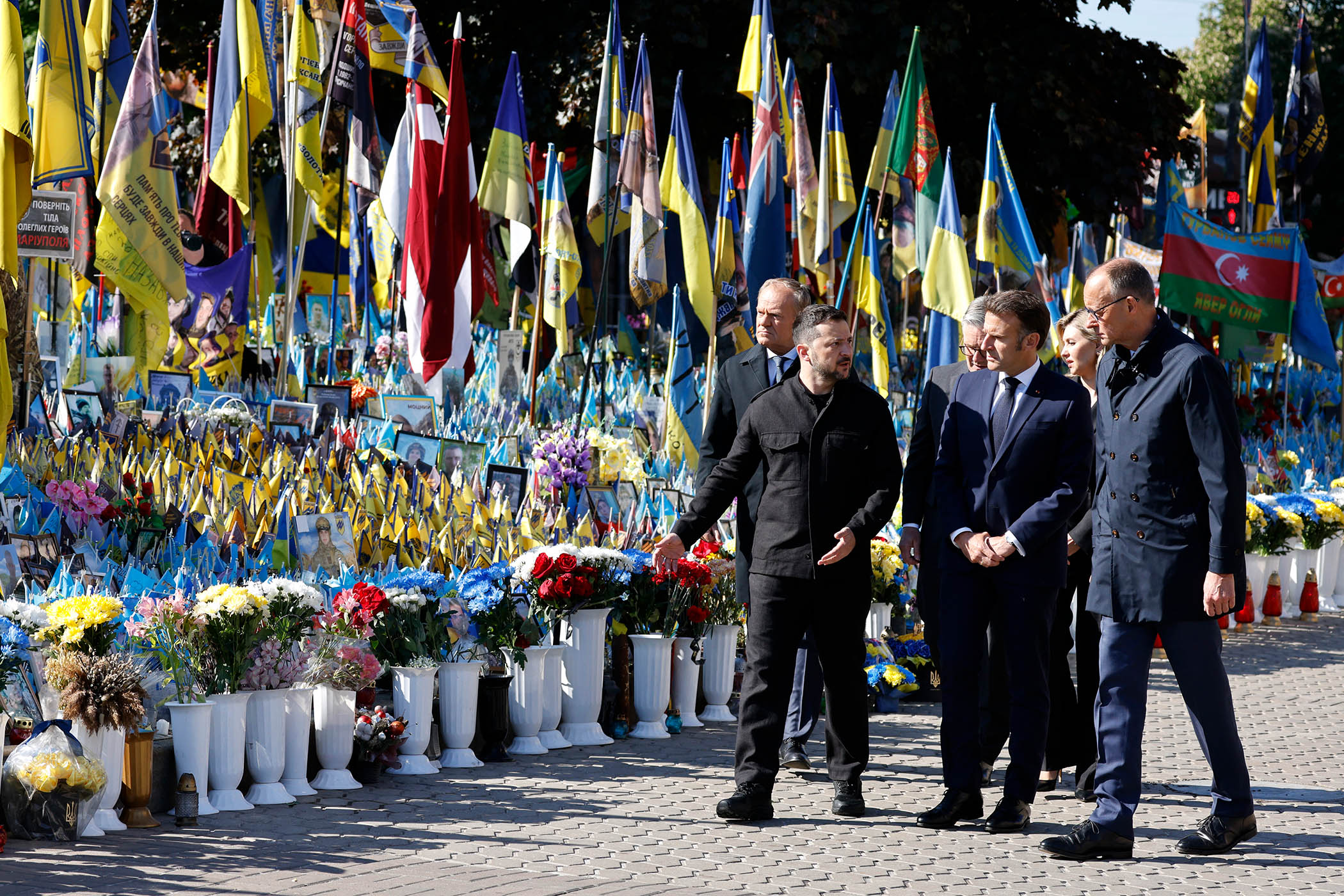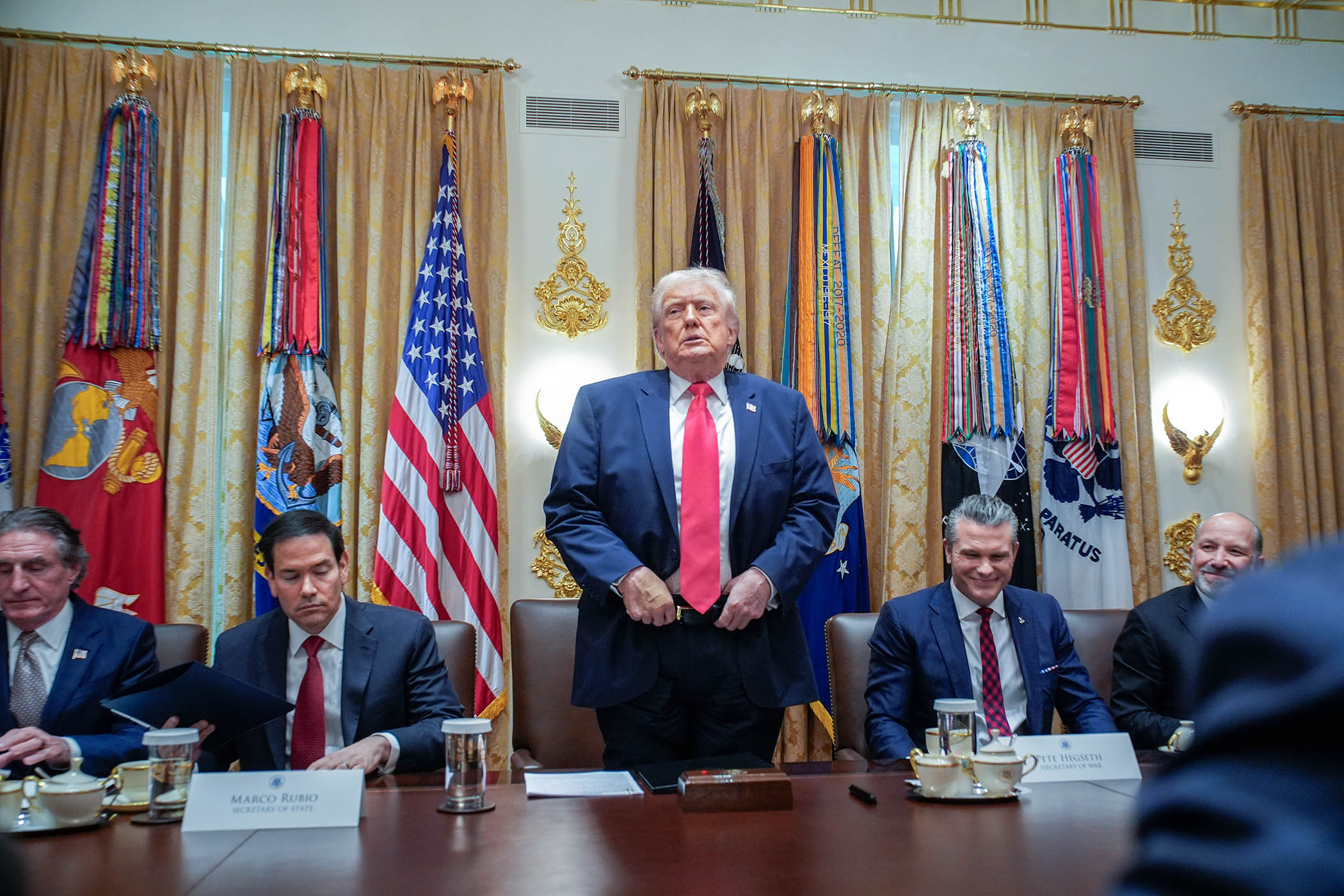There were hopes last month that President Trump had finally seen that Vladimir Putin was the aggressor in his war on Ukraine. They were revived last night when he imposed what he called “tremendous” sanctions on Russia’s two biggest oil companies.
So what? The Trump pendulum on Putin is still swinging. The last meeting between Trump and Ukraine’s Volodymyr Zelensky in the White House turns out to have been a bust, only marginally less painful than the previous one in February. Trump has since reversed himself on whether he believes Ukraine can win the war. Now he says he doesn’t think it can.
Plans for another Trump-Putin summit, this time in Budapest, have been shelved, but that doesn’t mean the autocrat and the would-be autocrat are on the outs. It does mean:
•
Ukraine now has to proceed on the assumption it can no longer count on American support of any kind.
•
That leaves Europe and the UK as its only useful allies.
•
That in turn means Russian sovereign assets frozen in Belgium, the UK and elsewhere will finally have to be unfrozen for Ukraine’s defence and reconstruction.
About those sanctions. They target Rosneft and Lukoil’s ability to do business on world markets. Between them the two companies account for more than half Russia’s oil output. The sanctions mimic a similar package imposed by the UK last week, but if experience is any guide they won’t defund Putin’s war machine.
About those assets. State-owned Russian investments worth a total of €290 billion have sat frozen in European and North American financial institutions – two-thirds of them in a single clearing bank in Brussels – since March 2022. Ever since, arguments have raged about whether they can be seized for Ukraine.
Related articles:
So can they? Not exactly. But at last a variation on seizure looks plausible.
Status check. “This is money to save Ukraine,” Polish foreign minister Radosław Sikorski said this month, championing an EU plan to lend Kyiv €140 billion (£122 billion) using the frozen assets as collateral. After G7 finance talks in Washington, the chancellor Rachel Reeves and EU leaders are racing to seal the deal by the end of the year, using €183 billion held by Belgium’s Euroclear. It’s framed as a reparations-backed loan, not confiscation, dodging legal problems such as sovereign immunity under UN rules.
Relief for Kyiv. The plan could help Ukraine with a $50 billion 2026 budget gap it’s due to face by April as allied aid wanes. It would reduce the need for €230 billion in new debt and ease pressure on EU taxpayers being asked to spend 3.5 per cent of GDP on defence by 2035. “Either we use the aggressor’s money or our own,” Sikorski said.
Legal shadow. In principle sovereign immunity, protected in the 2004 UN Convention, bars outright seizure of state assets. Belgium, wary of being left exposed as Euroclear’s host, is demanding G7 guarantees to fend off any legal backlash from Moscow.
Diplomatic gamble. Politically the loan would lock in long-term EU support for Kyiv (unlike sanctions, which have to be regularly renewed) without setting a precedent of asset seizure. “We’re exploring a new way to finance Ukraine’s war effort,” a UK spokesperson said, echoing Reeves’s G7 push.
Why so long? For most of the past three and a half years the argument has been over whether to seize or not to seize.
•
The European Central Bank warned that confiscation would dent the euro’s credibility, spooking investors such as China and raising borrowing costs.
•
It was said, and still is by some, that Russian retaliation – legal or against Western firms – could lead to chaos, especially for Euroclear.
Even for the loan plan, with US support uncertain, Sikorski’s assurance of a “happy resolution” still hangs on a Brussels breakthrough.
Reality check. It shouldn’t. Russia’s crimes in Ukraine surpass any of the Cold War including its forced annexations of Hungary in 1956 and Czechoslovakia in 1968. The idea that its frozen assets should be protected by UN smallprint updated in 2004 defies common sense.
Meanwhile… With or without those assets, Ukraine has no option but to keep fighting, restore its devastated energy infrastructure ahead of the coming winter and keep its economy working, not least to produce its own drones and missiles. If Europe doesn’t want Ukraine to fail, it has to find a way to use Russia’s money.
Photograph by Ludovic Marin/AFP via Getty Images



